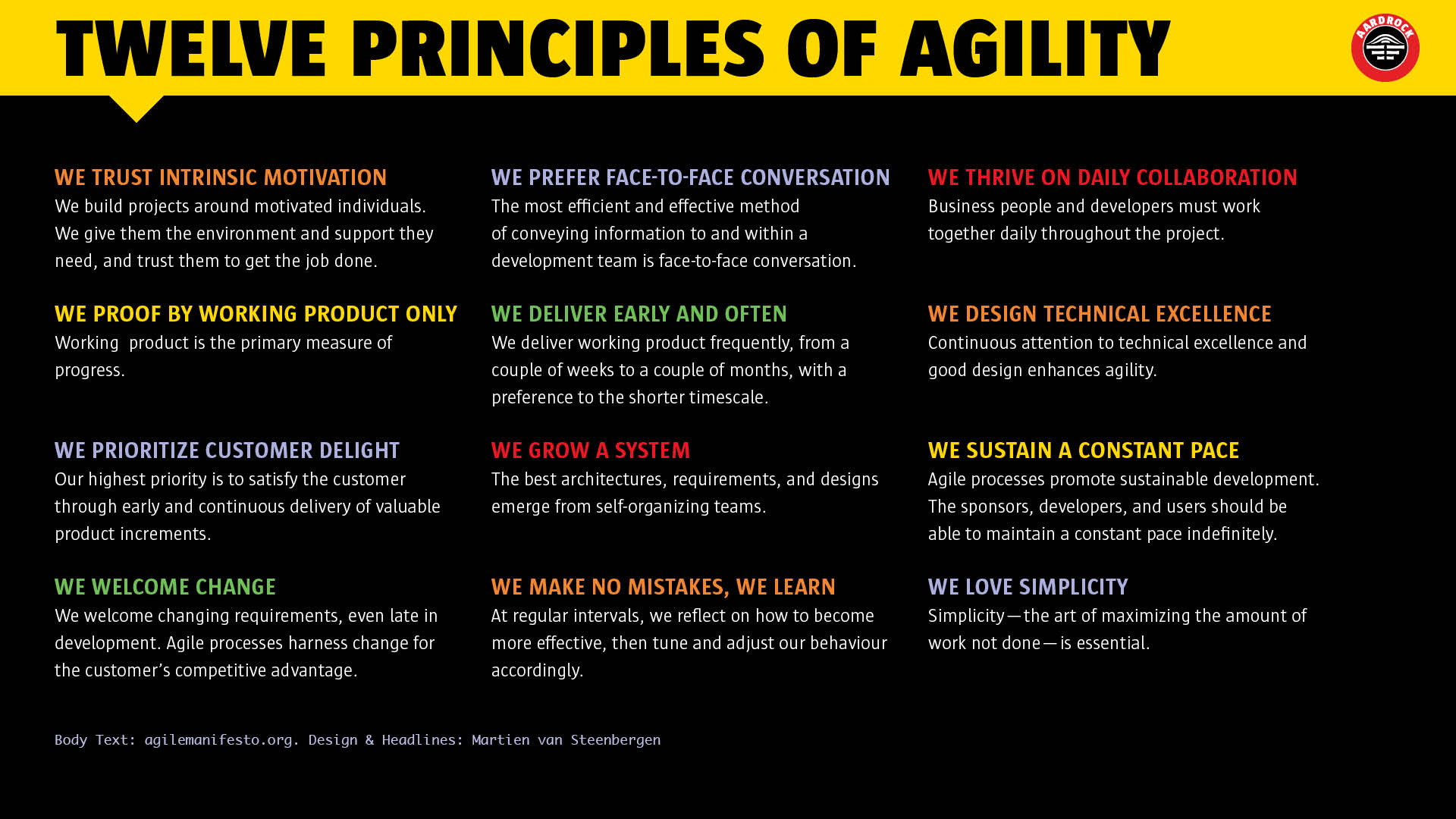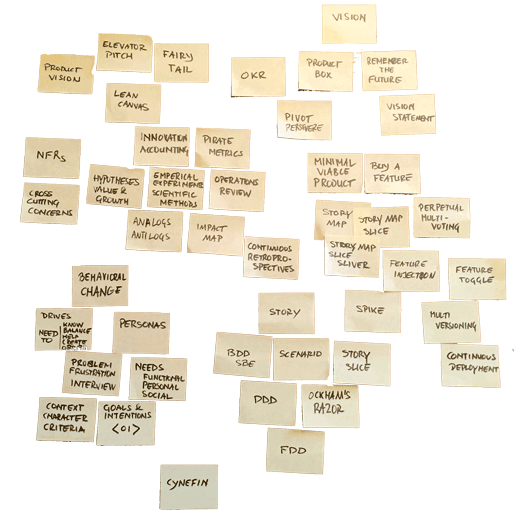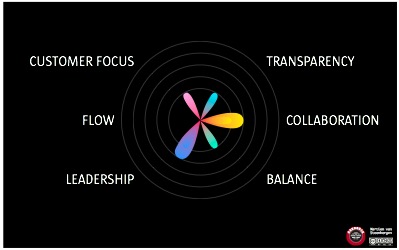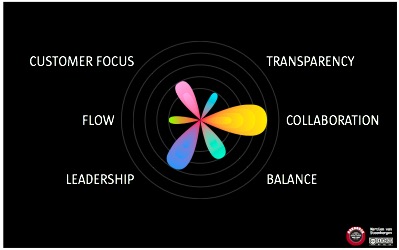
Remix of the 12 principles behind the Agile Manifesto. Headlines and design by Martien van Steenbergen. Also tweaked a few words to make it more general, e.g. changed “software” to “product”.

Remix of the 12 principles behind the Agile Manifesto. Headlines and design by Martien van Steenbergen. Also tweaked a few words to make it more general, e.g. changed “software” to “product”.
Tonic’s Rules to live by are quoted without permission from a little booklet I got at the SIGGRAPH ’93.
Put things where they belong. Few are won over by misplaced, misalinged, misdesigned anything. Form, really, is a function. Be kind to the user.
Observe a lot. Test everything—because sometimes “common sense” is neither.
It’s hard to make every product so understandable that people know how to use it before they pick it up. But it’s worth shooting for.
[Apple Powerbook (1991)]
Elegant and timeless beat fancy, gimmicky, or slick. Any day.
[Digidesign RI recording controller (1993)]
Give it a competitive advantage. Make it worth looking at. Worth holding. Worth using. Worth paying good money for.
If the guy next to you on the train had one, would you be more than a little curious? Envious? Good.
[Apple Newton prototype (1992) and Powerbook Duo (1992)]
It doesn’t matter how beautiful the thing is if you can’t manufacture it. Befriend the engineering team. Collaborate with the factory.
Instead of designing yourself into a corner, ask for their opinions. So you can produce it–by the thousands. By the millions. Affordably.
[Apple Personal Laserwriter (1990) and Macintosh IIci (1990)]
If you don’t like your destiny, invent a new one.
Have some fun. Experiment.
Invent a new product category. (Or a whole new industry.) Invent a new design language. Reset the corporate compass.
“It can’t be done,” naysayers will declare. Don’t listen.
[AT&T Personal Communicator concept (1992), Apple Guide concept (1991) and Knowledge Navigator concept (1987)]
© 1993 Tonic Industrial Design, Palo Alto, California, (415) 325-1326, (415) 326-4678, fax. All rights reserved.
So, everything boils down to changing ”’human behavior”’ based on ”’feedback”’ and ”’learning”’.
People give each other feedback and feedforward so the may learn to cooperate and collaborate better. So doing, they improve their behavior.
We run a ”’Lean Startup”’ to pivot like crazy in order to improve our product, while the product and its user stories aim to trigger different behavior from their users.
All this while we tune and tweak our processes—our way of working—to also change or improve our behavior.
There’s loops of loops all over the place, on all levels of [[life is a broccoli]] and across people, product and process. Oh, how elegant.

Now, how can you get all these Agile & Lean Product Development Topics and some descriptive texts on a single, beautiful, comprehensive, and elegant A0-sized poster?
Just say no to make your yes mean something.
Spending your limited time on the things that really matter creates a more intentional and solid yes, builds trust and coherence.
If you believe that you must keep your promises, overdeliver and treat every commitment as though it’s an opportunity for a transformation, then the only way you can do this is to turn down most opportunities.
No I can’t meet with you, no I can’t sell it to you at this price, no I can’t do this job justice, no I can’t come to your party, no I can’t help you. I’m sorry, but no, I can’t. Not if I want to do the very things that people value my work for.
Yes is the future no—in other words, you are lying, often to your dear ones.
Say yes too often, and your body will automatically tell you no in no time.
No is the foundation that we can build our yes on.
Here are nine practices to say a strategic no in order to create space in your life for a more intentional yes.
Say no to all issues that do not align with values, goals and norms—that fall outside the tolerance of your self or your organization.
Approach (similar to process leading to en|consent):
Therefore:
Listen to the other’s request and provide an understanding “No”, along with its motivation. Find a solution that you both can live with and track progress.
Variations:

Find out where you are on you path to agility.
Somehow, I always have disliked radar charts. They connect unassociated dots and I find them antique remnants from the past millennium. They yearn for a fresh new look. Pondering and visualizing, I came up with the “flower chart”. The unfolding of the flower shows its gradual development, adds the time laps or ‘Zeitgeist’ to it.
The examples below use the six values of Mike Burrows’ Agendashift, value-based delivery, change, and leadership, based on Agile, Lean, and Kanban.



Thoughts?
This just in, a [http://www.tut.com/inspiration/nftu Note from the Universe] captures the essence of agile:
Start it; you don’t have to be fancy.
Keep moving; you don’t have to go crazy.
Visualize; you don’t have to admit it.
See the end result; it doesn’t have to be material.
Expect miracles; they don’t have to be huge.
Pretend you’ve arrived; you don’t have to dance on tables.
And above all else, Martien, have fun.
This is why you started it, right?
Life, what a trip
:—The UniverseOkay, okay, Martien, they can be huge and you can dance anywhere you like… but you might rethink the frilly tutu.

General Stanley McCrystal from the U.S. Joint Special Operations Task Force in [https://hbr.org/2015/08/what-companies-can-learn-from-military-teams HBR » What Companies Can Learn from Military Teams]:
I still believe in rehearsals, but I’ve learned they have a different value. When I joined the Army Rangers in 1985 we’d rehearse airfield seizure operations—we’d parachute in wearing night vision goggles, and take the field. It’s a pretty complex thing, and we’d do it over and over. We’d have contingencies in case things went wrong, but we were always trying to make things as foolproof as we could.
The longer we did it, the more I realized the value of rehearsal was not in trying to get this perfectly choreographed kabuki that would unfold as planned.
The value of rehearsal was to familiarize everybody with all the things that could happen, what the relationships are, and how you communicate. What you’re really doing is ”’building up the flexibility to adapt”’.
I’ve never been on an operation that went as planned.